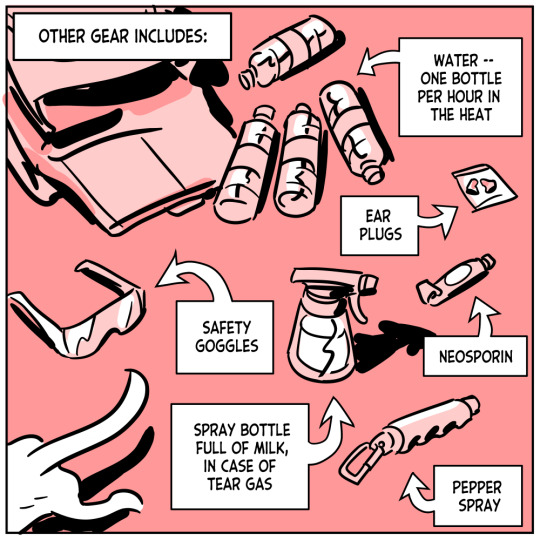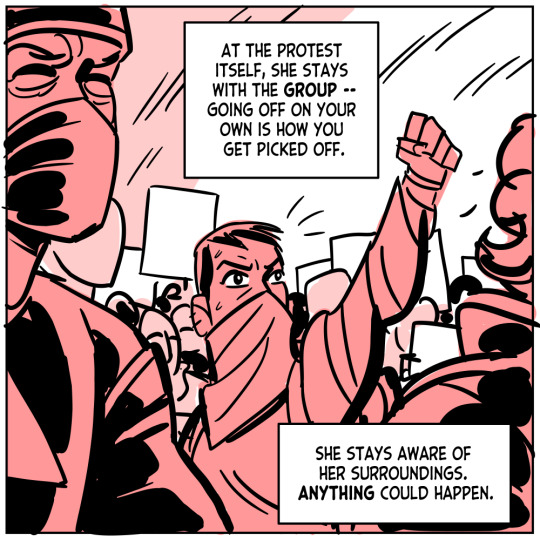#neomycin
Explore tagged Tumblr posts
Text

The Science Research Folios. Page 323.
#cocci#estuary#productivity#neomycin#bacterial overgrowth#small intestine#satyendra sunkavally#antibiotics#inhibitory effects#couch grass#brain stimulation#alkaline#plant diseases#Singapore#epidemics#manuscripts
0 notes
Text
i love spontaneously developing allergies. i love my immune system. this is great
3 notes
·
View notes
Text
Neomycin Sulphate Prices Trend | Pricing | News | Database | Chart

Neomycin Sulphate, a commonly used antibiotic in the pharmaceutical and agricultural sectors, has seen notable price fluctuations over recent years. The compound, known for its ability to combat bacterial infections, plays a significant role in medical formulations, especially for topical and oral treatments. Understanding the price trends of Neomycin Sulphate and the factors that influence them is essential for pharmaceutical companies, suppliers, and healthcare providers to make informed decisions. The global market for Neomycin Sulphate has been affected by various factors, including raw material costs, production capacities, regulatory measures, and shifts in supply and demand dynamics.
One of the primary determinants of Neomycin Sulphate prices is the cost of raw materials, which include key chemical precursors. Fluctuations in the prices of these raw materials can lead to increased production costs, subsequently driving up the prices of the final product. For instance, the price of fermentation-based products like Neomycin Sulphate can be impacted by changes in the cost of substrates and energy sources required during the manufacturing process. Moreover, disruptions in the supply chain, such as shortages of essential raw materials or logistical issues, can exacerbate price increases and contribute to market volatility.
Get Real time Prices for Neomycin Sulphate: https://www.chemanalyst.com/Pricing-data/neomycin-sulphate-1375
Production capacities and technological advancements in manufacturing also play a crucial role in shaping the Neomycin Sulphate market. Companies that invest in modern, efficient production techniques often benefit from reduced operational costs, which can lead to more stable pricing structures. However, the global market is also subject to competitive pressures, where manufacturers may engage in price wars to gain market share. These dynamics can create short-term price drops, though they are often unsustainable in the long term. Furthermore, any changes in manufacturing regulations or environmental standards imposed by governments can significantly impact production costs and market prices. Stricter regulations may require compliance with more stringent quality control procedures, increasing manufacturing expenses and, in turn, raising prices.
Demand patterns are another pivotal factor influencing Neomycin Sulphate prices. In the pharmaceutical industry, demand is often tied to the prevalence of bacterial infections, healthcare trends, and the introduction of new drugs containing Neomycin. Fluctuations in the demand for topical and oral antibiotics can lead to variations in price. During periods when bacterial resistance becomes a public health concern, there is often a surge in demand for antibiotics like Neomycin, potentially driving prices higher. Conversely, when new and more effective antibiotics enter the market, the demand for older products may decline, contributing to a drop in prices.
The agricultural sector also influences Neomycin Sulphate prices, as it is used in animal feed and veterinary applications to prevent and treat infections in livestock. With the rising focus on animal health and food safety, there has been increased utilization of antibiotics, including Neomycin, in livestock management. The expansion of the livestock industry in regions such as Asia-Pacific, where rapid economic growth has led to higher demand for animal protein, has spurred greater use of veterinary antibiotics. This growing demand can contribute to upward pressure on prices. However, with increasing global attention on antimicrobial resistance (AMR) and stricter regulations surrounding the use of antibiotics in agriculture, governments are imposing more rigorous controls. Such measures can limit supply and result in fluctuating prices in the market.
On the other hand, regulatory factors directly impact Neomycin Sulphate pricing. In regions with stringent drug approval processes, the cost of bringing new products to market can be substantial. Regulatory bodies such as the U.S. Food and Drug Administration (FDA) and the European Medicines Agency (EMA) require comprehensive testing and compliance with safety standards, which can increase the cost of production. Additionally, any revisions to existing regulations or the introduction of new policies regarding the use of antibiotics can create uncertainties that affect market stability. This is particularly relevant as the global community grapples with the challenges posed by AMR, prompting authorities to reconsider antibiotic usage guidelines.
The competition among major suppliers and manufacturers can also influence pricing trends. Companies engaged in the production of Neomycin Sulphate may adopt different strategies, such as mergers, acquisitions, and strategic alliances, to bolster their market position. These efforts can impact supply levels and pricing structures. Additionally, companies with robust research and development (R&D) capabilities may introduce newer formulations or alternative solutions that could shift market trends, potentially influencing the price of Neomycin Sulphate over time.
Overall, the Neomycin Sulphate market is shaped by a complex interplay of factors, including raw material costs, production capacities, regulatory pressures, and supply and demand fluctuations. For industry stakeholders, staying informed about these variables is crucial for anticipating market changes and making strategic business decisions. Companies that can adapt to the evolving landscape, embrace efficient production techniques, and navigate regulatory environments effectively are better positioned to manage cost fluctuations and maintain competitiveness. As the global market continues to evolve, so too will the strategies needed to thrive in this sector.
Get Real time Prices for Neomycin Sulphate: https://www.chemanalyst.com/Pricing-data/neomycin-sulphate-1375
Contact Us:
ChemAnalyst
GmbH - S-01, 2.floor, Subbelrather Straße,
15a Cologne, 50823, Germany
Call: +49-221-6505-8833
Email: [email protected]
Website: https://www.chemanalyst.com
#Neomycin Sulphate#Neomycin Sulphate Price#Neomycin Sulphate Prices#Neomycin Sulphate Pricing#Neomycin Sulphate News
0 notes
Text
In the first 6 years of life your child receives the following through vaccines:
•17,500 mcg 2-phenoxyethanol (antifreeze)
•5,700 mcg aluminum (neurotoxin)
•Unknown amounts of fetal bovine serum(aborted cow blood)
•801.6 mcg formaldehyde (carcinogen, embalming agent)
•23,250 mcg gelatin (ground up animal carcass)
•500 mcg human albumin (human blood)
•760 mcg of monosodium L-glutamate (causes obesity & diabetes)
•Unknown amounts of MRC-5 cells (aborted human babies)
•Over 10 mcg neomycin (antibiotic)
•Over 0.075 mcg polymyxin B (antibiotic)
•Over 560 mcg polysorbate 80 (carcinogen)
•116 mcg potassium chloride (used in a lethal injection)
•188 mcg potassium phosphate (liquid fertilizer agent)
•260 mcg sodium bicarbonate (baking soda)
•70 mcg sodium borate (Borax, used for cockroach control)
•54,100 mcg of sodium chloride (table salt)
•Unknown amounts of sodium citrate (food additive)
•Unknown amounts of sodium hydroxide (Danger! Corrosive)
•2,800 mcg sodium phosphate (toxic to any organism)
•Unknown amounts of sodium phosphate monobasic monohydrate (toxic to any organism)
•32,000 mcg sorbitol (Not to be injected)
•0.6 mcg streptomycin (antibiotic)
•Over 40,000 mcg sucrose (cane sugar)
•35,000 mcg yeast protein (fungus)
•5,000 mcg urea (metabolic waste from human urine)
•Other chemical residuals
(From the book, "What The Pharmaceutical Companies Don't Want You To Know About Vaccines" - By Dr.Todd M. Elsner)
Let this sink in. 🤔
#pay attention#educate yourselves#educate yourself#knowledge is power#reeducate yourself#reeducate yourselves#think for yourselves#think about it#think for yourself#do your homework#do some research#do your own research#ask yourself questions#question everything#medical malpractice#medical corruption#crimes against humanity
121 notes
·
View notes
Text
Post hoc ergo propter hoc might be wrong most of the time, but ...
A couple of days ago, for my birthday, I documented my fourth adverse reaction to a popularly-prescribed medication. None of which my doctor had even heard were possible, none of which I was warned about by my pharmacist.
Four times now, I've developed "a whole new disease" 6 to 18 months after starting a new medication. Four times I eventually thought to google my most recent medication and my current symptoms, and found that it was possible that I could be experiencing a (supposedly) "one per thousand" or even "one per ten thousand" person adverse reaction. Four times I asked my doctor to substitute a different medication, and lo and behold, the problem went away. Four fucking times.
And three of those four times, before I did so, I brought up the new problem as part of a physical, in front of a physician who had my whole chart in front of her, then she prescribed a new medication to treat my new symptoms, and I filled that prescription at a pharmacy where the pharmacist was looking right at a screen listing every medication I was taking. They both have degrees in this shit. Why was I the one who had to figure this out?
And also, bullshit that these adverse reactions are that rare. No way in hell I "won" a 1:1000 or 1:10000 lottery four times. And I know why, too: because I'm old, and I'm fat, and that meant that my doctor and my pharmacist "knew" what was causing my "new disease," either my age or my weight.
Skin dying and sloughing off around a recent incision? Yeah, that happens to old people and to fat people, they don't always heal well, just keep applying your antibiotic until it does. (Neomycin allergy: tissue necrosis.)
Mental fog and increasing dementia? Yeah, that happens to old people, nothing can be done. (Wellbutrin: mental fog. Lisinopril: mental fog.)
High blood sugar? Yeah, that happens to fat people, lose weight. (Thiazide diuretic: high blood sugar.)
And all four times, insisting on switching to a different medication solved the problem.
Oh, and that doesn't even count the fact that I was misdiagnosed with "drug seeking behavior" for telling my surgeons that the opiates were having no effect, despite the highly visible clue of my bright-red beard: I inherited the genes that make me totally opiate non-responsive. Count that as a fifth adverse drug reaction, if you like.
(Never mind that I wasn't asking for higher doses, I was telling them to stop prescribing opiates; that was "a clever ruse." And, oh, yeah, one clever nurse practitioner had heard of my condition and recommended I bully the doctor into prescribing Tramadol instead, which doesn't work perfectly, but provides some relief if I don't overuse it.)
So do not believe that an adverse reaction is as rare as the company says it is if and only if it's an adverse reaction that medical professionals are eager to explain away as having nothing to do with the medication, one they're eager to jump to conclusions and blame on age or weight or sex. Because in those cases, you're not measuring the adverse reactions, you're measuring the number of people with those reactions who fought to get them counted.
You have to have noticed by now that we tell people (or at least the white college-educated people) that they have to be "their own health advocates," but how in the hell is that supposed to even work, when we're not the ones with degrees in medicine and years' worth of experience with these conditions?
So, please pass this advice along to anybody who's on any medication for a chronic condition, anything they're going to have to take for years or forever to manage the symptoms of some supposedly incurable condition:
Any time you develop new symptoms, google-search each medication that you are taking, one at a time, followed by the symptom you've just recently developed. If you find any matches, no matter how rare it says they are, ask the doctor who prescribed that earlier medicine to suggest an alternative and try that before you let them add another medication.
Because otherwise you could end up one pill that treats your symptoms, but creates a new illness, so they give you another pill to treat that illness, and it causes a third illness, until you end up on so many pills that you're a walking biochemical disaster site. In fact, any time you meet someone (or if you are someone) who's taking, say, four or more separate medications for symptomatic relief, swap out the oldest medications for alternatives, the ones they've been taking the longest, until you rule out iatrogenic illness. Do not, not, not let them add a fifth, a sixth, whatever medication until you have ruled out adverse reactions. Your very life may depend on it!
And for whatever god damned reason, I wish I knew why, neither your doctor nor your pharmacist will think to recommend this if you don't.
78 notes
·
View notes
Note
figured you should stop biting but neomycin is an antibiotic it's so they don't get infected like not a hand lotion just a droplet on the wounds
I'll look into it, thank you for caring 🫂 I've had them get infected and swollen with pus before, it is NOT fun
3 notes
·
View notes
Text
Went to a third doc as a last attempt for this ear infection, she took literally like a 2 second glance and said 'oh my god, that looks really painful!' And prescribed amoxicillin and neomycin

#delete later#illness cw#cvs said they had them in an hour!!!#yall im gonna cry im trying really hard not to its so fucking painful rn and the fucking lidocaine isnt working!!!#ive had like 5 hrs of sleep in 3 days bc it just wont stoooop#i can feel the fucking air pressure changes this shit HUUUURTS OH MY GOOOOKOD#please please please let this be the end 🙏😭
5 notes
·
View notes
Note
*applies neomycin and wraps stab wound in sterile gauze and bandages*
There.
-🔥
...
2 notes
·
View notes
Text
Ad for Neosporin
🗝️🏷️ scars, implied torture
Fairly certain the defining difference in whether a wound scarred was neosporin. I remember a few deeper lacerations that didn’t leave a trace despite lesser variations turning permanent.
Same alter, same weapon, same flesh. The deepest still show, but not as much as those untreated. We’ve been dwelling on scars lately, if it wasn’t obvious. Trying desperately to map out the old so we know when we gain the new.
Anyway. Neosporin. Apparently very good at its job, never got any infections or lasting aftereffects. Smother the wounds in that shit and you’re golden. (Unless you’re allergic to neomycin.)
5 notes
·
View notes
Text

The Science Research Notebooks of S. Sunkavally. Page 214.
#antibiotics#animal feeds#weight gain#neomycin#black body radiation#amino acid catabolism#sunflower plant#unsaturated fatty acids#CAM plants#malic acid#henbane#long day plant#flowering#satyendra sunkavally#theoretical biology#manuscript#diaries
0 notes
Text
omfg yhis eye cream my grandma snuck me is fucking heavenly idk about yall but I love me some neomycin and polymyxin b sulfates and dexamethazone with ophthalmic ointment
8 notes
·
View notes
Text
Neomycin Sulphate Prices | Pricing | Trend | News | Database | Chart | Forecast
Neomycin Sulphate is an antibiotic widely used in both human and veterinary medicine. It is highly valued for its effectiveness against a broad range of bacterial infections, making it a staple in the pharmaceutical market. As a result, its price trends and availability are key concerns for manufacturers, healthcare providers, and consumers alike. Neomycin Sulphate prices fluctuate based on several factors, including raw material availability, production costs, market demand, and global trade dynamics. Understanding these factors can offer insights into the current pricing landscape and help stakeholders anticipate future price movements.
One of the most significant factors impacting Neomycin Sulphate prices is the cost and availability of raw materials. Like many pharmaceuticals, Neomycin Sulphate relies on specific active ingredients, and the price of these components can be affected by changes in agricultural output, supply chain disruptions, or environmental factors. For example, if there is a shortage of a particular chemical or component used in the production of Neomycin Sulphate, the cost of the antibiotic can rise accordingly. This dynamic often leads to volatility in the market, where unexpected changes in raw material availability or cost cause sudden spikes in the price.
Get Real Time Prices for Neomycin Sulphate: https://www.chemanalyst.com/Pricing-data/neomycin-sulphate-1375
Another critical factor is the cost of manufacturing, which includes energy prices, labor, and technological advances in production. The pharmaceutical manufacturing process is highly regulated to ensure safety and efficacy, which often results in higher production costs. Any shifts in energy prices or the costs associated with maintaining production standards can directly affect Neomycin Sulphate prices. In countries where energy costs are particularly high, manufacturers may face challenges in keeping production affordable, leading to an increase in market prices. Moreover, new advancements in production technologies can sometimes reduce costs by improving efficiency, but these advancements require initial investments, which can drive prices up in the short term.
Global demand for Neomycin Sulphate also plays a crucial role in determining its market price. With increasing awareness about antibiotic resistance and the essential role antibiotics play in both human and veterinary medicine, demand for this drug remains high. However, demand varies across different regions depending on the prevalence of bacterial infections, healthcare infrastructure, and veterinary practices. For instance, countries with large livestock industries often see higher demand for Neomycin Sulphate, as it is frequently used to treat infections in animals. This increased demand can lead to regional price disparities, with areas experiencing higher usage seeing elevated prices compared to regions with lower demand.
Trade dynamics are another essential aspect influencing the cost of Neomycin Sulphate. Many countries depend on imports to meet their pharmaceutical needs, and any disruptions in global trade can affect availability and pricing. Tariffs, trade restrictions, and political instability in key manufacturing countries can lead to supply chain disruptions, causing temporary shortages and price increases. Additionally, fluctuations in foreign exchange rates can impact the price of imported Neomycin Sulphate, especially for countries that rely heavily on international markets for their supply. When the local currency weakens against the currency of the manufacturing country, the price of imported antibiotics like Neomycin Sulphate can rise significantly.
Competition among pharmaceutical manufacturers also affects Neomycin Sulphate pricing. In a highly competitive market, companies may reduce their prices to gain a larger market share, which can lead to temporary price reductions. However, this competitive pricing strategy is often unsustainable in the long term, especially if it leads to reduced profit margins. Smaller manufacturers may struggle to compete with larger pharmaceutical companies, particularly those that can afford to cut prices and still maintain profitability. This competition-driven pricing can result in fluctuations, as companies periodically adjust their prices to reflect changes in market conditions and competitive pressures.
Regulatory factors and government policies can also influence the price of Neomycin Sulphate. Governments play a key role in setting pharmaceutical prices through policies that regulate the cost of essential medicines. In some countries, governments set price ceilings or negotiate directly with manufacturers to keep drug prices affordable for consumers. These regulations can help stabilize prices, but they may also reduce manufacturers' profit margins, leading to less investment in production or research and development. On the other hand, in markets with fewer regulations, prices may be more volatile and subject to greater fluctuation based on market conditions.
The rise of generic alternatives has further complicated Neomycin Sulphate pricing. When a patent on a brand-name drug expires, other manufacturers can produce generic versions, often at a lower price. The introduction of generics increases competition and can lead to a reduction in prices for the original brand-name drug. However, this effect depends on the number of generic manufacturers entering the market and their production capacities. In some cases, the availability of generics can lead to significant price reductions, making Neomycin Sulphate more accessible to consumers. However, in other cases, especially if only a few manufacturers produce the generic version, prices may remain relatively high.
The COVID-19 pandemic has also had a profound impact on the global pharmaceutical industry, including the market for antibiotics like Neomycin Sulphate. The pandemic caused widespread disruptions to supply chains, affecting the availability of raw materials and slowing down production processes. These disruptions led to temporary shortages of many medications, including Neomycin Sulphate, and contributed to rising prices in some regions. Moreover, the increased demand for antibiotics during the pandemic, both for treating secondary bacterial infections in COVID-19 patients and for maintaining public health in general, further drove up prices. Although supply chains have largely stabilized, the long-term effects of the pandemic continue to influence pricing dynamics.
In conclusion, Neomycin Sulphate prices are influenced by a complex interplay of factors, including raw material availability, production costs, global demand, trade dynamics, competition, regulatory policies, and external events such as the COVID-19 pandemic. These factors can lead to significant price fluctuations, making it challenging for stakeholders to predict future pricing trends. Understanding the underlying causes of these price changes can help manufacturers, healthcare providers, and consumers better navigate the market and make informed decisions about purchasing and using Neomycin Sulphate. As the global pharmaceutical landscape continues to evolve, monitoring these factors will be essential for anticipating future changes in Neomycin Sulphate prices.
Get Real Time Prices for Neomycin Sulphate: https://www.chemanalyst.com/Pricing-data/neomycin-sulphate-1375
Contact Us:
ChemAnalyst
GmbH - S-01, 2.floor, Subbelrather Straße,
15a Cologne, 50823, Germany
Call: +49-221-6505-8833
Email: [email protected]
Website: https://www.chemanalyst.com
#Neomycin Sulphate#Neomycin Sulphate Price#Neomycin Sulphate Prices#Neomycin Sulphate Pricing#Neomycin Sulphate News#Neomycin Sulphate Price Monitor
0 notes
Text
3 notes
·
View notes
Text
important addition: a lot of people CANNOT use neosporin (allergies to neomycin or polymyxin B). Bring a tube of bacitracin, you can find it right next to neosporin at the pharmacy/target/etc.








The World Of Becca Blake
Art by Dan Schkade
89K notes
·
View notes
Text
Antibiotika


Bakterizide Wirkung
= Töten Bakterien ab über Hemmung d. Zellwandsythese
Betalaktame
Penicilline
Penicillin G (=Benzylpenicillin-Procain) - Schmalspektrum
Ampicillin (Aminopenicillin) - Breitspektrum
Amoxicillin (Aminopenicillin) - Breitspektrum
Caphalosporine
Ceftiofur (3. Generation) Reserveantibiotikum
Cefquinom (4. Generation) Reserveantibiotikum
Betalaktaminhibitoren
Clavulansäure
Polypeptidantibiotikum
Polymyxin E (=Colistinsulfat) Reserveantibiotikum
Bakteriostatische Wirkung
= hemmt Wachstum u. Vermehrung von Bakterien
Aminoglykoside
hemmen die Proteinsynthese
Gentamicin
Dihydro-Streptomycin
Neomycin
Paromycin
Apramycin
Spectinomycin
Tetrazykline
hemmen die Proteinsynthese
Doxycyclin
Oxytetrazyklin
Chlortetrazyklin
Makrolide
hemmen die Proteinsynthese Reserveantibiotika
Tylosin
Tulathromycin
Tildipirosin
Tilmicosin
Phenicole
hemmen die Proteinsynthese
Florfenicol
Pleuromutiline
hemmen die Proteinsynthese
Tiamulin
Valnemulin
Lincosamide
hemmen die Proteinsynthese
Lincomycin
Flourquinolone
= Gyrasehemmer Reserveantibiotika
Enrofloxacin
Marbofloxacin
Danofloxacin
Sulfonamide
= Hemmen die Folsäuresynthese
Sulfamenthoxazol
Sulfamidin
Sulfadoxin
Sulfadiazin
Trimethoprim
= hemmt die Folsäuresynthese

0 notes